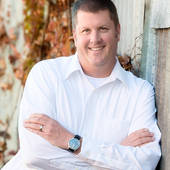Raising livestock means raising grass, so it would be a good idea to start thinking of yourself as a "Grass Farmer". Learn how to grow grass well and the livestock will follow . . . literally!
So, to best take care of your animals, and your land, begin to think of yourself as a “grass farmer.”
In other words, your main crops are pasture plants (the true grasses, like orchard grasses and fescues; legumes, such as clover and alfalfa; and forbs, like dandelions and other tap-rooted “weeds”), which in turn feed your animals.
Ideally, a pasture should contain about 60 percent grass and 40 percent legumes. If yours doesn’t have enough legumes, talk to your local county extension agent to find out what types grow well in your area. Legumes can be introduced simply by spreading seed in early spring on top of the ground, either with a whirligig seeder or by throwing handfuls out as you walk around.
Growth primarily takes place near the soil surface, at the plant’s “basal growth point.” Initially a new plant gets all its energy from the seed, and seed-dependent growth is slow. Once sufficient green, leafy matter is exposed, above the basal growth point, the power plant kicks in (photosynthesis) and growth speeds up. As a plant reaches maturity, its growth slows, and the energy it creates through photosynthesis begins flower and seed-head production.
Depending on the species of plant, it may die after it produces a seed head, go dormant until next year, or it may experience a second growth period.
As a grass farmer, you want to control things so that the plant’s activity is maintained in the quick-growth phase. To accomplish this, you need to “clip” the plant just before its growth slows with flower and seed production, but leave enough green surface showing to keep the power plant operating at full steam. Typically, this requires taking about 40 to 50 percent of the leaf off, and it can be done either mechanically, with a mowing device, or with those “natural” clipping units—your animals.
After a plant has been grazed (or mechanically clipped) it requires a recovery period. The recovery period is the time it takes the plant to regain the energy it lost by being cut back—or the time that it takes for the plant to regrow to the length it was when it was clipped. If plants aren’t allowed an adequate recovery period before they’re bitten a second time, they weaken, and may die.
Take care of your pasture and it will take care of you, and just as importantly, it will take care of your animals.
May all your acres be green ones!

Comments (0)Subscribe to CommentsComment